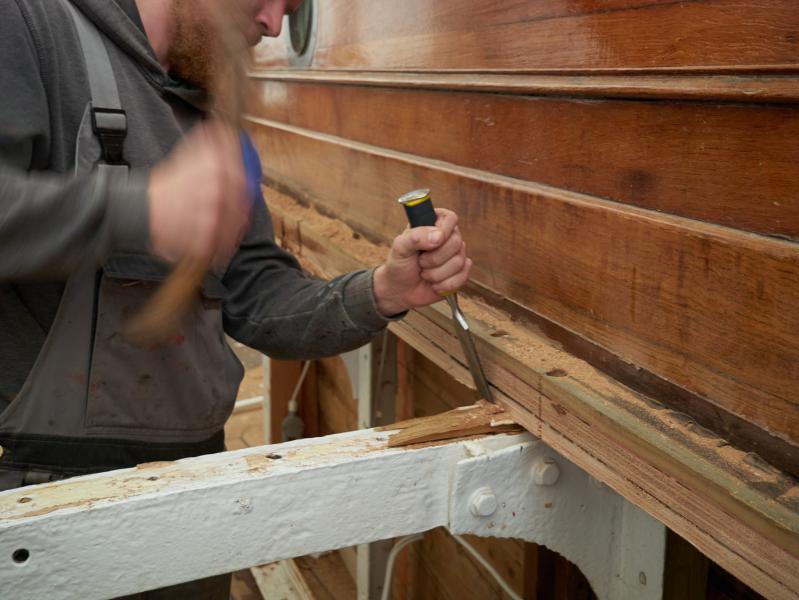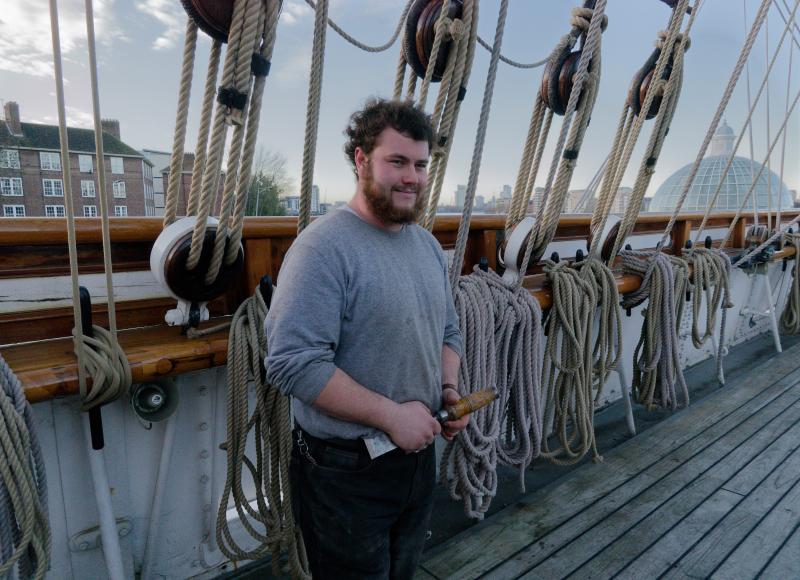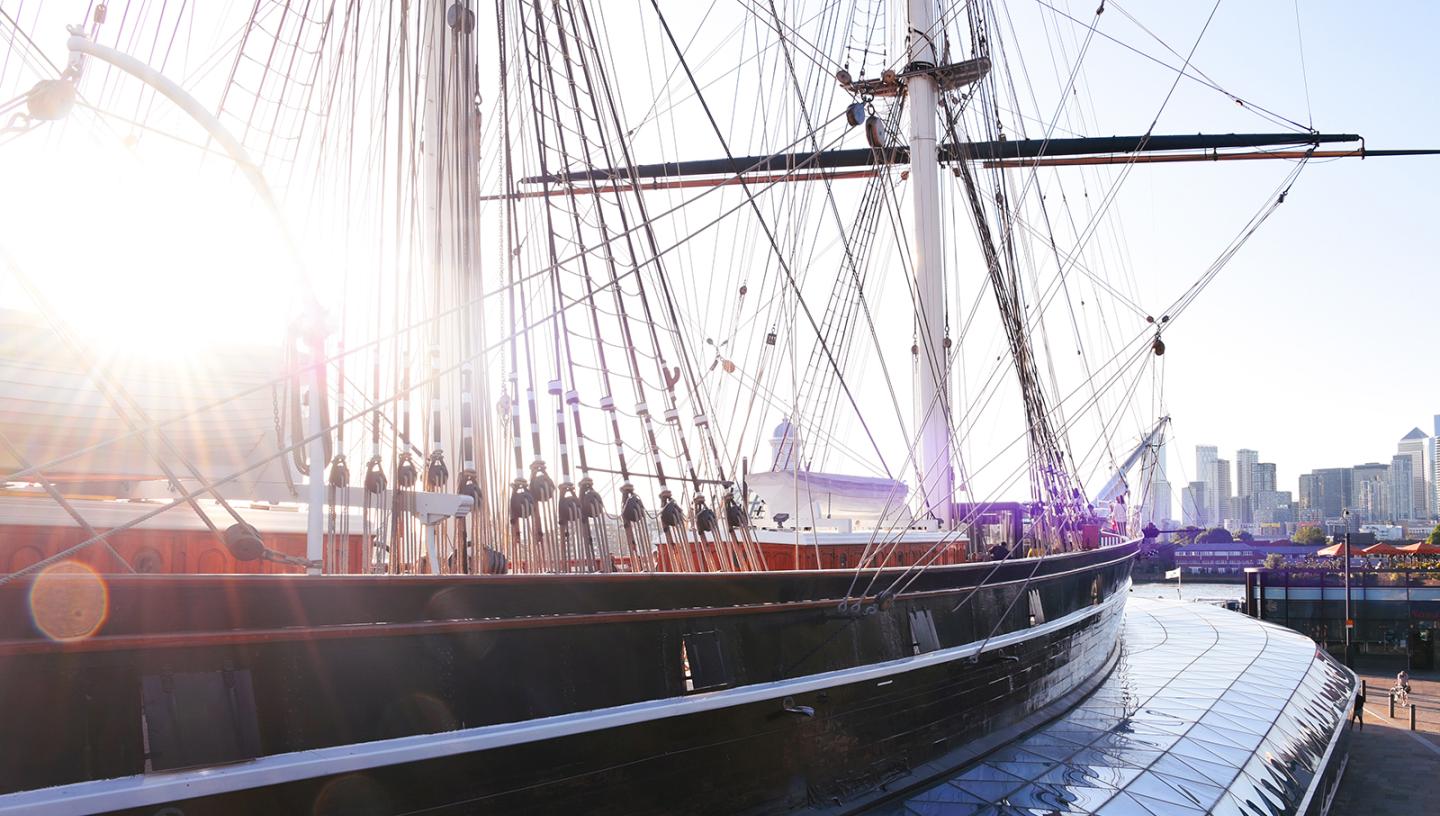
Repairing the deck of a 155-year-old vessel is no mean feat, but Chris Wood and his team of crafters are skilled problem solvers.
Cutty Sark’s poop deck – the raised area at the stern, or back, of the vessel – has been replaced to keep the ship watertight. It has been a complex process: items such as the ship’s wheel have to be removed and new wooden planking carefully hoisted in and laid, using traditional methods.
As project manager at T.S. Rigging – a company that specialises in the restoration and rigging of traditional vessels – Chris has encountered many of these challenges before. He has been responsible for ensuring the project runs smoothly, from organising logistics to sourcing and ordering materials.
The conservation work has been carried out by a team of four shipwrights, led by Kevin Finch. This six-month project has ensured Cutty Sark is kept ship-shape for future generations.
From selecting materials to the importance of traditional skills, Chris gives an insight into the work involved in this conservation project.
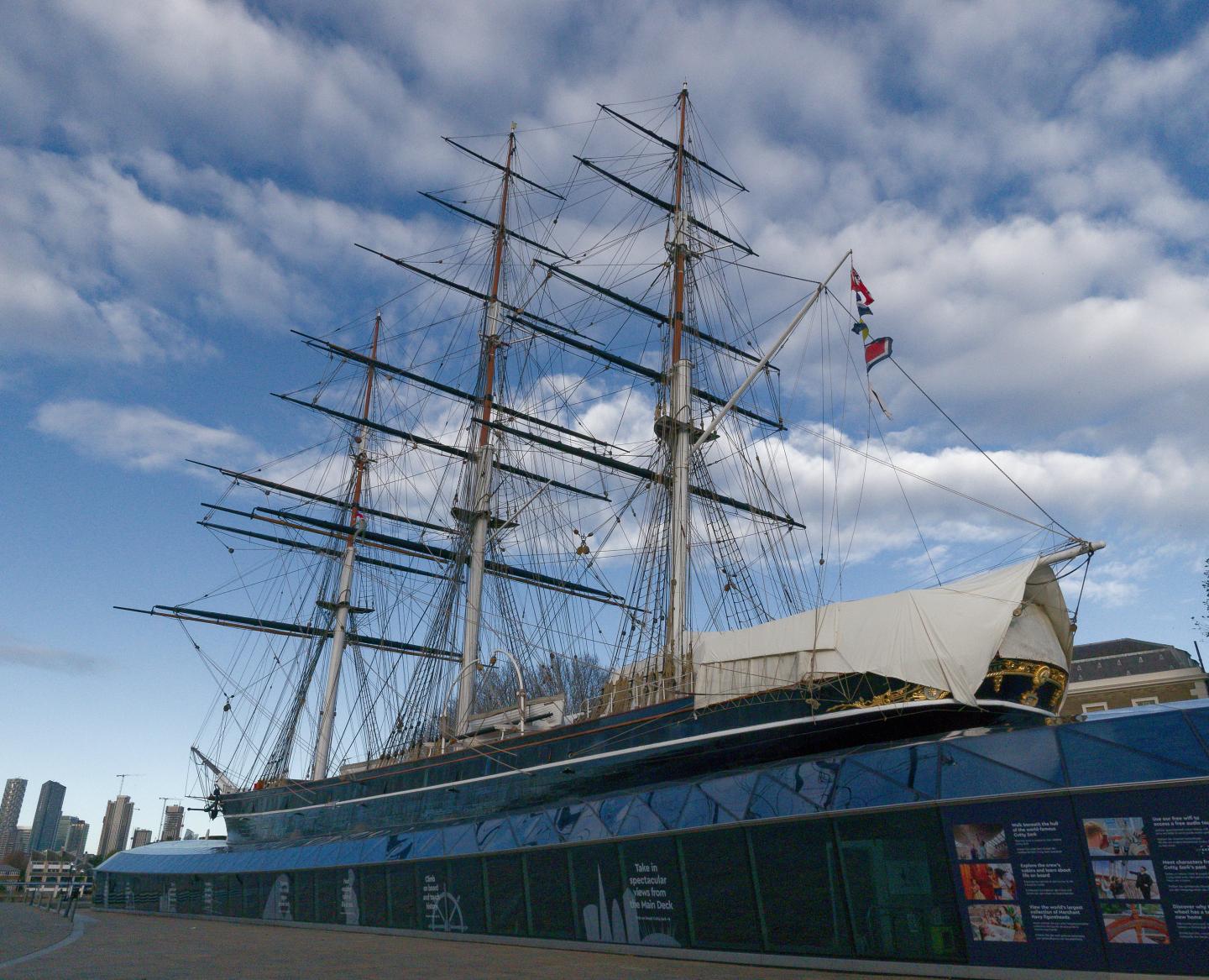
Why does Cutty Sark’s poop deck need to be replaced?
Many people think of a ship’s deck as a floor, but it’s more of a roof for everything below. When Cutty Sark was at sea, much of the time the deck would have been awash with water. The deck had to be watertight to protect Cutty Sark’s crew and cargo, such as tea and wool.
Cutty Sark’s poop deck is a modern composite deck, made from various materials, including three layers of plywood with a teak veneer on top. Unfortunately, this has leaked and rotted, and needs to be replaced.
It will be replaced with a traditionally laid deck, which will be close to the poop deck’s original layout and dimensions. Historically, the deck would have been made from teak, but due to the political situation in Myanmar, we will be using iroko. This West African tropical hardwood has similar properties to teak and is also rot resilient.
What does the conservation involve?
One of the first tasks involves processing the timbers for the deck. The iroko is dried in a kiln to kill off pests and seasoned outdoors – undercover – to stop the rain from getting to it. It is then machined into planks by a timber merchant and turned into deck planks by shipwrights – professionals who build, maintain and repair ships.
Replacing the poop deck is quite a challenging project, but we like problems to solve! There are several features we need to work around, such as the Liverpool House, which contained the accommodation for the officers. We also have to remove the deck furniture, such as the ship’s wheel and steering gear.
Once the new deck is laid, the seams between the planks have to be filled – a traditional method known as ‘caulking’. To do this, we use oakum: hemp fibres that have been saturated in tar. The oakum is knocked into place using caulking irons and a mallet to keep the deck watertight. Traditionally, oakum would have been made from old rope, which would have been combed out by prisoners or people from the workhouse.
Over the top of the oakum, we put deck pitch. The resin is heated over a cauldron and poured over the seams using a specially shaped ladle with a spout. This process is called ‘paying’ and ensures maximum waterproofing.
We will be using traditional methods throughout the project, which would have been easily recognisable to those who built Cutty Sark in 1869.
How important is it to keep traditional skills alive?
Ships like Cutty Sark are not commonplace at all. Across the country, we have just a handful of larger historic wooden vessels, including HMS Gannet in Chatham and HMS Unicorn and RRS Discovery in Dundee, so conservation projects like this offer a valuable chance to use traditional shipkeeping skills.
These skills are dying out for various reasons. There is a decline in the number of traditional ships, due to their age and the expense required to maintain them; government and local authorities have limited the vessels’ use due to ‘catch-all’ policies to fit with modern shipping requirements; and shipping companies no longer use older ships as modern cargo vessels are larger and cheaper to run.
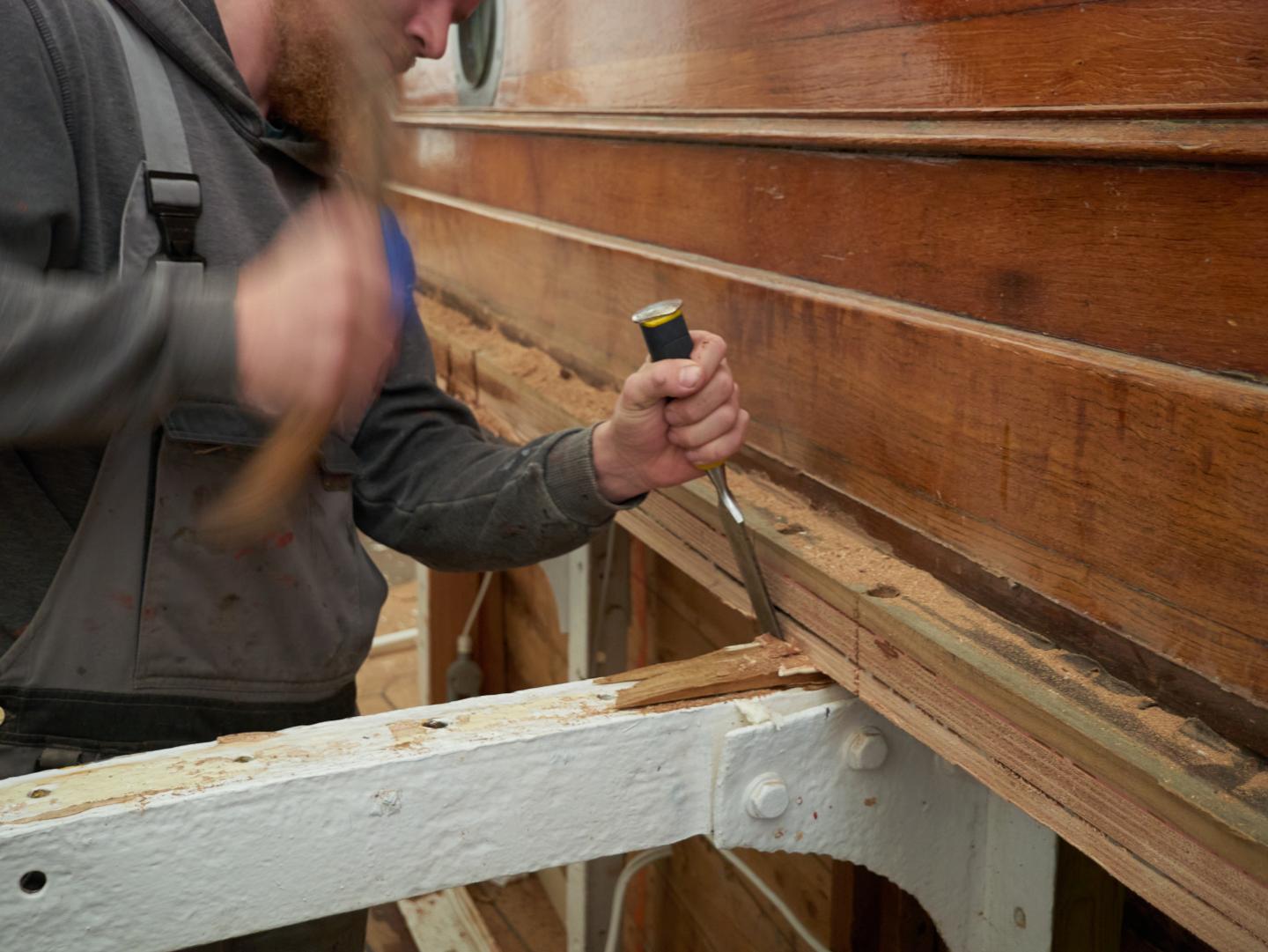
While there’s certainly a general lack of knowledge about the existence of traditional vessels and shipkeeping skills, we’ve seen a resurgence of young people who want to get involved. For example, Lucian, who is working on this project, has just completed his apprenticeship in boat building.
Learning these traditional skills is a lifelong job. A lot of the people who practise them tend to be one-man bands, and it’s my job to bring them together. While lots of museums have smaller ships, which are great for practising skills, Cutty Sark is something else: it’s a unique vessel and large in size. There aren’t many opportunities to work on ships like this.
It’s good that Royal Museums Greenwich is playing an active part in keeping these traditional practices alive for the sake of maintaining Cutty Sark. The Museum has an important role to raise awareness of shipkeeping skills and tell people that these careers exist. Without the museum allowing these skills to be used, the ship would suffer for it.
Which part of the project are you excited about?
I will get massive satisfaction from seeing the new deck in place and knowing that it’s protecting the ship.
Cutty Sark is an interesting vessel to work on. Growing up, I had no idea that industries like shipwrighting still existed. I was studying at the University of Greenwich during Cutty Sark’s restoration work, and I never saw the ship – it was under a big tent. After graduating, I started volunteering on Cutty Sark and was given a temporary shipkeeping job. When the contract was up, I was recommended to T.S. Rigging, and that’s where I’ve been ever since. I’ve been working on Cutty Sark in some capacity since 2014, and there’s nowhere on this ship I haven’t been.
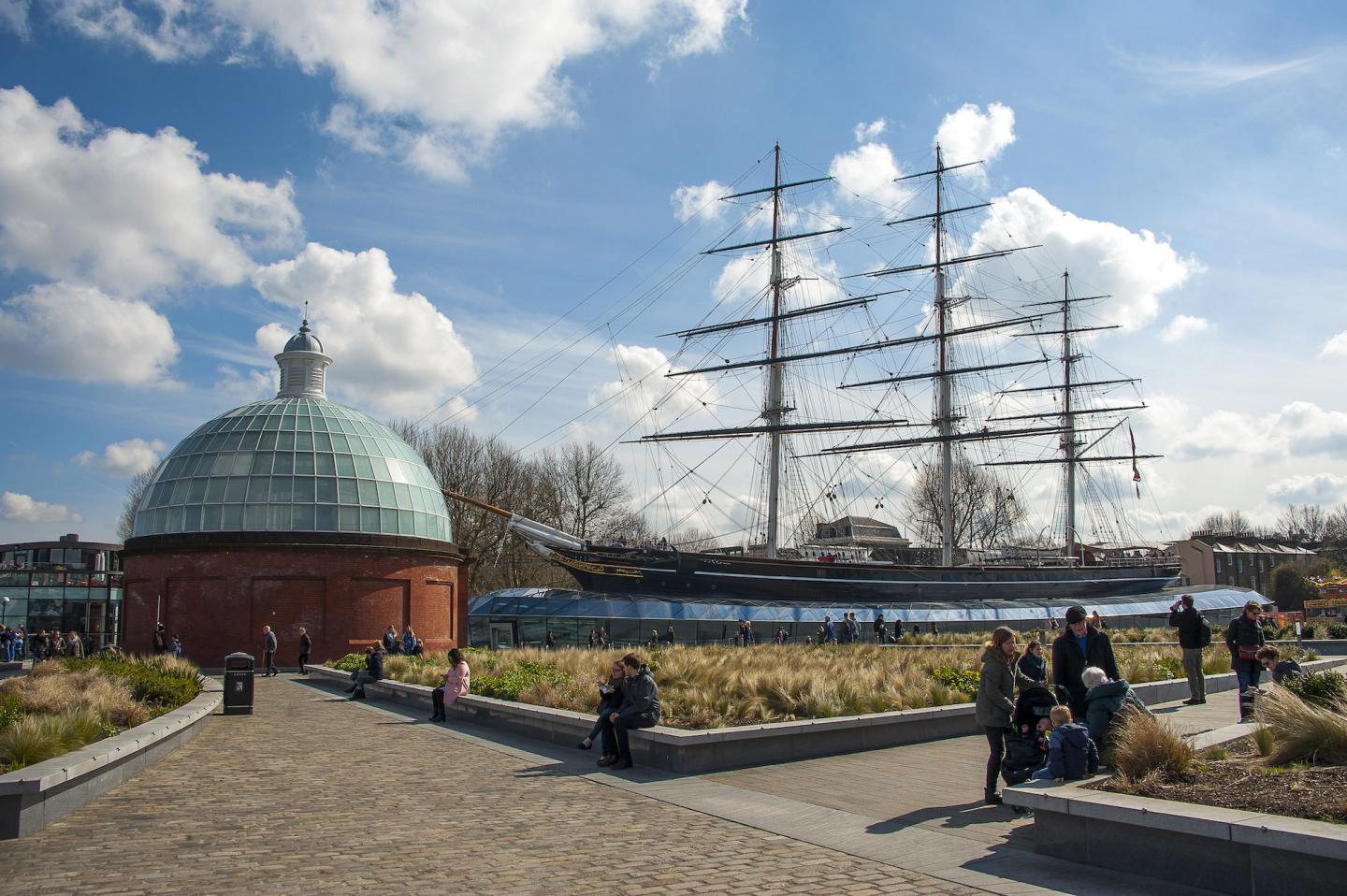
We’ll do whatever is required to make the project work. We will invent new things, make our own tools – we like to find solutions. We’re trying to keep the ship alive, and it’s fulfilling to think that Cutty Sark will last longer because of this project.

